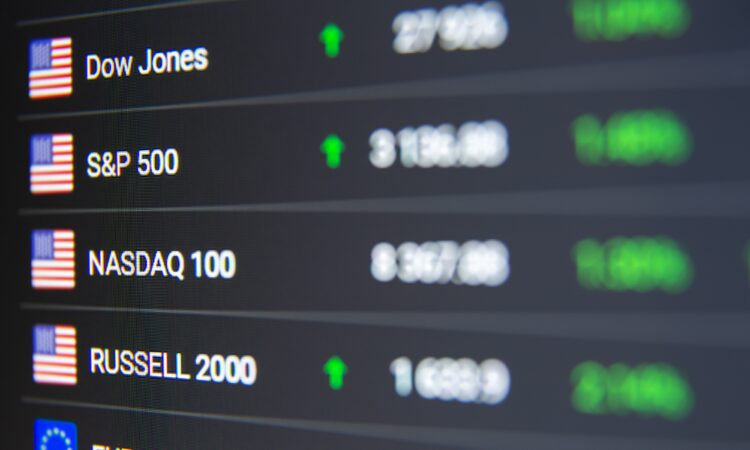This Stock Market Indicator Has Been 83% Accurate Since 2000. It Signals a Surprising Move in 2025.

The S&P 500 (^GSPC -0.29%) is the preferred gauge for the entire U.S. stock market because it includes 500 large-cap companies that cover 80% of domestic equities by market value. Meanwhile, the Russell 2000 is the preferred gauge for small-cap stocks. It includes about 2,000 companies covering 5% of domestic equities.
Importantly, large-cap stocks have regularly outperformed small-cap stocks in recent years. In fact, the S&P 500 advanced 197% during the last decade, more than doubling the 94% return in the Russell 2000. But a stock market indicator with a relatively reliable track record says the opposite could happen in 2025.
Specifically, the Russell 2000 has outperformed the S&P 500 during the 12 months following five of the last six presidential elections (83% of the time). Some experts offer this explanation: Small-cap companies earn less revenue from international markets, so they are less exposed to tariffs and currency fluctuations.
Read on to learn more.

Image source: Getty Images.
History says the Russell 2000 could soar in 2025
Since 2000, the Russell 2000 has typically outperformed the S&P 500 during the 12-month period following presidential elections, with the only exception coming in 2008. The chart below provides details on how each index performed during the year following the last six presidential elections.
|
Presidential Election |
S&P 500 12-Month Return |
Russell 2000 12-Month Return |
|---|---|---|
|
2000 |
(22%) |
(13%) |
|
2004 |
7% |
12% |
|
2008 |
4% |
3% |
|
2012 |
24% |
33% |
|
2016 |
21% |
24% |
|
2020 |
38% |
49% |
|
Average |
12% |
18% |
Data source: YCharts. The chart shows the returns in the S&P 500 and Russell 2000 during the 12 months following a presidential election, which takes place on the Tuesday following the first Monday in November.
As shown above, the Russell 2000 has returned an average of 18% in the 12-month period following the last six presidential elections. Meanwhile, the S&P 500 has gained an average of 12% during the same period. Put differently, small-cap stocks have outperformed large-cap stocks by an average of 6 percentage points under those conditions.
As mentioned earlier, pundits often attribute that pattern to small-cap companies having less exposure to foreign markets, which means they are less affected by higher tariffs and a stronger U.S. dollar than their large-cap peers. That rationale is particularly intriguing today because both variables are in play following the recent election.
Specifically, President Trump has proposed stiff tariffs on Canada, China, and Mexico. And the U.S. Dollar Index has increased sharply since the election, such that the dollar is more valuable today (relative to a basket of foreign currencies) than it has been since October 2022. And commentary from JPMorgan Chase analyst Mary Park Durham suggests that strength could persist:
The upcoming administration’s focus on boosting domestic manufacturing, increasing tariffs, and deregulating industries could spur business growth and sustain higher interest rates, supporting the dollar.
Of course, past performance is never a guarantee of future results. But history says the Russell 2000 could beat the S&P 500 by a wide margin in the coming months:
- The Russell 2000 closed at 2,261 on election day in November. If its performance aligns with the historical average, it will advance 18% to 2,668 by November 2025. That implies 16% upside from its current level of 2,303.
- The S&P 500 closed at 5,782 on election day in November. If its performance aligns with the historical average, it will advance 12% to 6,476 by November 2025. That implies 6% upside from its current level of 6,118.
Investors can position their portfolios to benefit from that potential outperformance by owning shares of the Vanguard Russell 2000 ETF (VTWO -0.27%).
The Vanguard Russell 2000 ETF
The Vanguard Russell 2000 ETF provides cheap and easy exposure to the Russell 2000. The fund includes a blend of small-cap value stocks and small-cap growth stocks, and it’s most heavily weighted toward the three market sectors: industrials (19%), financials (17%), and healthcare (16%). That differs from the S&P 500, which is most heavily weighted toward the technology sector.
The five largest positions in the Vanguard Russell 2000 ETF are listed by weight below:
- FTAI Aviation: 0.5%
- Sprouts Farmers Market: 0.5%
- Insmed: 0.4%
- Vaxcyte: 0.4%
- Credo Technology Group: 0.3%
The Vanguard Russell 2000 ETF has a relatively low expense ratio of 0.1%, which means the annual fees on a $1,000 portfolio will total $1. Comparatively, the average expense ratio on U.S. mutual funds and index funds was 0.36% in 2023, according to Morningstar.
In closing, readers should bear in mind the S&P 500 has consistently outperformed the Russell 2000 over long periods. Large-cap companies tend to be more resilient than small-cap companies, and the technology sector has frequently led the market higher in recent years. I expect those patterns to persist in the future.
To that end, while buying a small position in the Vanguard Russell 2000 ETF is sensible, I would still allocate more capital to an S&P 500 index fund like the Vanguard S&P 500 ETF.
JPMorgan Chase is an advertising partner of Motley Fool Money. Trevor Jennewine has positions in Vanguard S&P 500 ETF. The Motley Fool has positions in and recommends JPMorgan Chase and Vanguard S&P 500 ETF. The Motley Fool recommends Sprouts Farmers Market. The Motley Fool has a disclosure policy.


